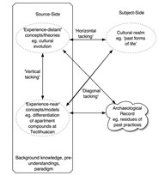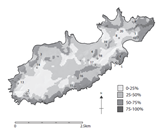Issei Labor, Sawmill Towns, and the Archaeology of Racism
My current research focuses on the relationship between labor, racism, racialization, and class on resource extraction sites in the Pacific Northwest. With the assistance and guidance of my adviser and PhD committee chair, Sara Gonzalez, I am conducting a multi-phase research project at the sawmill town site of Barneston, Washington. My project attempts to determine what kinds of anti-exclusion strategies were adopted by Issei (First-Generation Japanese American) laborers at Barneston. How, for example, did they respond to anti-Japanese racism? How did they navigating the sociopolitics and racialized labor structure of the town? This project is ongoing, with a projected end date of spring 2020, at the latest. Those interested in learning more can visit the project website, the Issei at Barneston Project.
Relevant Publications:
- Carlson, David. 2017. The Issei at Barneston Project: An investigation into issues of race and labor at an early twentieth-century Japanese American sawmill community. Archaeology in Washington 17 (Summer): 30-62. [Available upon Request]




